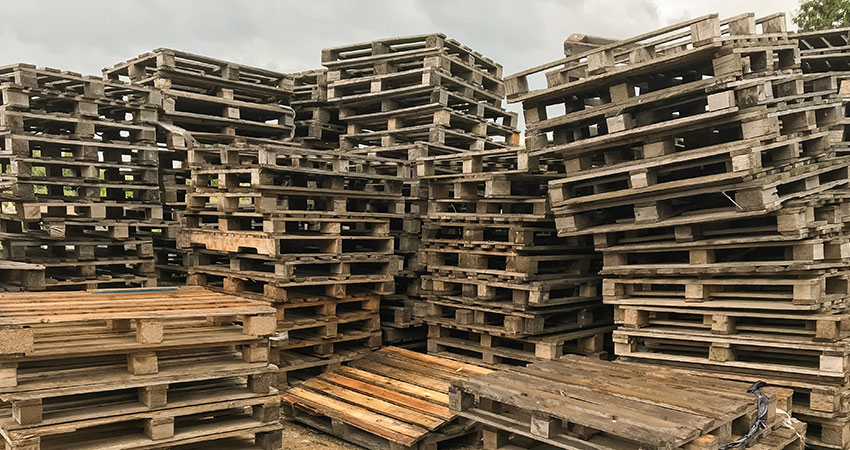Mention reverse logistics and many might initially think of returning unwanted or damaged merchandise back up the supply chain. However, a growing trend in reusable transport packaging has created an opportunity to add value through reverse logistics of returnable and reusable assets.
Once considered a necessary cost center, this aspect of reverse logistics can actually increase efficiency while decreasing costs if handled well, a win-win every business can appreciate.
The Rise of Reusable Transport Packaging
While not new to the scene, reusable containers have seen explosive growth throughout the supply chain. It’s not surprising, really. Reusable transport packaging (RTP) has been shown to reduce product damage while improving efficiency. But perhaps the key impetus driving RTP in recent years has been the demand at the consumer level and business level for increased supply chain sustainability.
The idea of reducing waste is laudable in itself, but the efficiency and bottom-line benefits of incorporating RTP only come when the process is operationally valuable. However, maximizing this opportunity isn’t a modest endeavor. It takes a carefully crafted strategy and buy-in throughout the supply chain, and that means first understanding the challenges involved in the use and return of RTP.
RTP: What to Do with It
As RTP grows in popularity and usage, the sheer volume of these containers, even in a short loop, can overwhelm a distribution center not equipped to handle it. While many reusable containers are designed to be easily stackable, the sorting and processing of used containers remains a necessary task.
A stack or pile of containers may include different sized units. Some may be specific to certain products, especially true in food shipment. Some containers might be wet or dirty. Some may belong to one manufacturer while others to suppliers. Redeployment of these assets can’t happen without their proper sorting and processing – tasks many fulfillment and distribution centers may not consider a priority or be staffed to handle effectively.
Perhaps the most important challenge of successfully incorporating RTP is having visibility into location of the assets. It’s not uncommon for companies to spend millions of dollars on reusable assets and begin shipping them without a plan in place to manage them.
How many containers did you ship to location A last month? How many did you receive back? If a facility can’t answer these kinds of questions, it won’t be long before assets begin disappearing. Even if you’re talking about containers that cost only a few dollars each, the aggregate loss won’t go unnoticed when you’re forced to routinely replace them.
For these reasons, it’s vital the approach to reverse logistics in your facility not be halfhearted. It’s a worthwhile investment that deserves the attention of a dedicated approach.
The Business Case
Understanding the challenges of utilizing RTP, along with recognizing the potential to turn it from cost center to profit center, means you can build a business case for developing a tailored plan to fit your specific chain.
First, you need to determine if there is a problem and how big it is. Surprisingly few companies actually make the effort to quantify their costs from lost assets. The default routine is to assess at intervals and replace the shrinkage with new assets. You don’t need to be an accountant to see how this could become increasingly costly.
With a thorough analysis of your reverse logistics pain points, start developing a plan for easing them. Bear in mind, though, that implementing a plan will affect stakeholders differently. Your business case must demonstrate the benefit to the overall supply chain and the greater good. It’s possible that one or more stakeholders will see costs increase. You’ll need to illustrate how net-net it will result in savings or profits elsewhere.
It’s also imperative to gain buy-in across stakeholders and departments. As an example, most hands-on users of reusable containers don’t have a vested interest in the physical packaging. Their concern is the product inside the container. But clear communication of the goals, objectives and net positives of your reverse logistics plan keeps all parties on board and participating.
Putting Your Plan into Action
Being able to understand the impacts to all stakeholders and develop a functional plan to streamline use of RTP might require outside help. Due to its complexity, moving parts and variability, it’s a competency often outside the scope of most facility managers.
Whether it’s a task you implement internally or outsource, the ultimate success of your reverse logistics plan will require an ongoing commitment to accumulate and interpret data about the movement of your assets. You also have to be prepared for future needs or disruptions.
The days of linear, one-way supply chains are over. Waste can’t and shouldn’t be tolerated. Thankfully, transport packaging, including reusable containers, pallets and totes, functioning in a mindfully constructed closed loop, can produce efficiencies that transition away from the traditional cost center model.
Mike Hachtman is the founder, President and CEO of Relogistics Services

